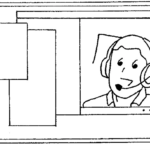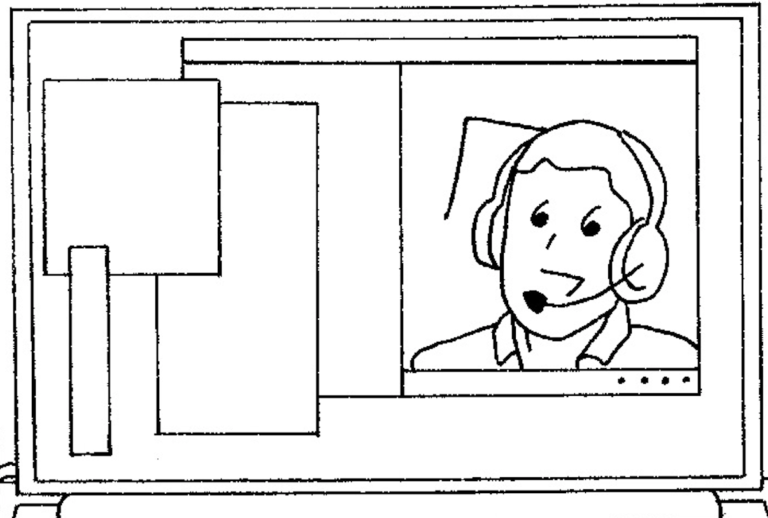In February I wrote about the experimental retrospective format for our team’s “cross-pod retro” (so-called, because our large team is divided into smaller pods). Since then, my manager Jo Webb and I have continued to tweak the retro format, based on feedback from surveys done following each retro.
Building on feedback
Our teammates said they got lots of value from the small group discussions. They also liked the way we included remote team members via laptop and video chat for each small group. On the down side, they found self-organizing into the small groups awkward, they were disappointed with the followup on action items and experiments, and some people weren’t satisfied with the range of topics to discuss.

For our latest cross-pod retro, Jo and I had trouble booking the only large conference room in our office which will fit our on-site team. Our team had recently tried an “all-remote” meeting for our bi-weekly “share and tell”, where each pod demos what they’ve been working on. It worked really well, so we decided to try an all-remote retro. Jo is remote, and I am remote two days a week, so we both especially value letting remote team members be on an equal footing with the local team.
Technology
We use Zoom for meetings, and Jo discovered that it has a “breakout rooms” feature. The meeting host can put participants in separate breakout rooms for small group discussions. The host can send messages to each breakout room, although participants in the rooms can’t reply back. We tested this with a few people and found it worked well for our purpose. Jo was kind enough to act as facilitator so that I could participate.
We planned to have each small group use a shared Google drive document to record their discussion as well as their outcomes in the form of experiments and action items. Each group would free to use their own retro format within their discussion, such as a “happy/puzzled/sad” collection and discussion.
The process
For the actual meeting, once everyone was in the main zoom, Jo started the meeting by soliciting appreciations. Since it’s a cross-pod retro, we ask for people to shout out people in other pods or roles who helped them or had an awesome achievement. We’ve continually gotten positive feedback about this nice way to get the meeting started and the energy up.
Jo explained the goals of the retro, to reflect on challenges and problem areas in small groups and design experiments to address them. After 30 minutes of small group discussion, each group would present their outcomes. The topic areas this time were process, culture, learning, psychological safety, empowerment and effecting change, and remote collaboration.
We had a shared spreadsheet with a column for each topic, so that each of us could put our name in the column for the topic we wanted to discuss. We asked that if a group got larger than five people, they divide themselves into two groups. It took a bit longer than we expected for Jo to create the breakout rooms with so many people.
Great discussions – face to face
I joined the psychological safety group. I found this particularly interesting because a new designer had just joined our team, and she chose to join our discussion. She had some experience working on inclusion activities in another company office. We also had someone visiting from our Dublin office who asked to participate to see how we do our retro. Having these fresh perspectives along with long-time team members added so much to our discussion. We collected topics with a “Happy/Puzzled/Sad” format on a shared spreadsheet. We didn’t have time to get to all of them but we felt we addressed the most useful ones. Our action items included learning more from the activities in the other offices that our new designer and visitor volunteered to research.
Jo messaged each breakout group 10 minutes and 5 minutes before the time limit to remind us to be ready to share our outcomes when we joined back together. That was super helpful to keep us focused.
I felt it was a huge benefit that we could all see and hear each other equally well. When the co-located team is in a conference room with remotes on the monitor, it’s hard for remotes to see and hear everything. I’d like to hear all the jokes, whether I’m physically in the room or not!
Debrief
At the request of our facilitator Jo, we all joined the main meeting again. Zoom’s breakout feature made this all really easy. A spokesperson for each group gave a summary of their discussion and action items, including how they might measure progress towards their goal. This went really quickly.
Jo asked that anyone willing to co-facilitate a future retro let her or me know. Our plan is to continue to pair – one experienced facilitator can pair with the next volunteer.
One of our teammates suggested that next time, we do the topic selection and group-joining ahead of time, so that the breakout rooms can be created faster. We will definitely try that.
We ended up being able to stop a bit early. Each group put their shared document or spreadsheet into our “cross-pod retros” folder so that we can all read through them.
Followup
I created and sent out a feedback survey to see how people like the all-remote format and get ideas for more improvements, as well as remind everyone to let us know if they’d like to help facilitate in the future. We already have one volunteer!
We are waiting for survey results, but the vibe seemed quite positive to me. The group that discussed challenges for remote people pointed out that the company has an initiative to improve inclusion for remote collaboration and encouraged us to join the #remote Slack channel.
One recent improvement in our team was to attach high quality noise-cancelling headsets to each pair workstation so that it’s super easy to pair or mob with remote team members. Thanks to that, many of our pods and wedges have all-remote standups, mob programming and testing sessions, and retrospective meetings where everyone is remote. I feel like this is transforming the atmosphere and helping remotes (including myself two days a week) feel so much more included and valued.
Learning
Dual lessons here: keep experimenting with retro formats so that the team gets more value from them, and keep finding ways to include remote team members and let them contribute their maximum value. I’d love to hear your own experiences with all-remote retros.


